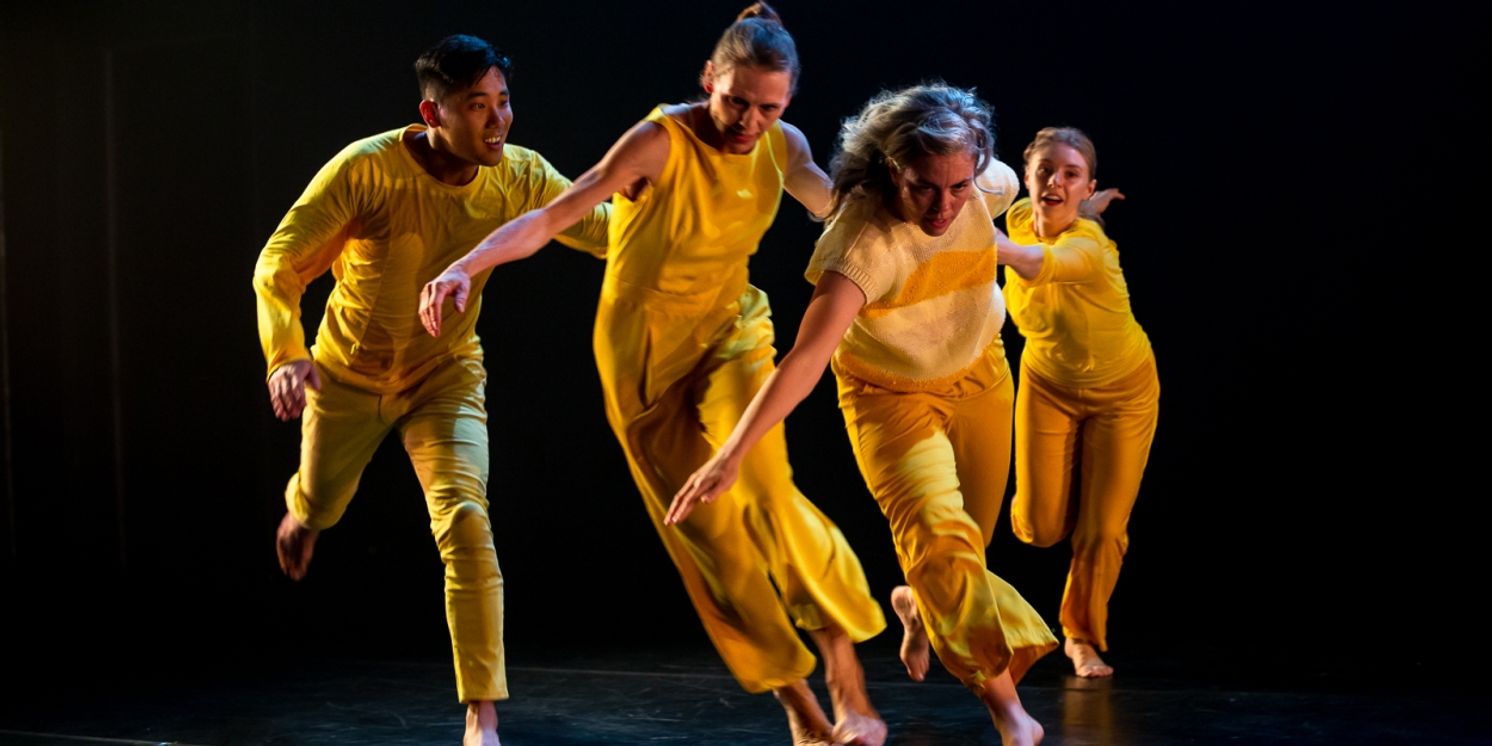Review: WEI at Aki Studio
This dance show exploring collective identity runs until July 31st.

WÉI, a new 50-minute dance piece choreographed by Yvonne Ng, is billed as an exploration of identity and belonging, asking questions about the importance of nature versus nurture. Are our identities fixed at birth, or changeable? Do we evolve by imitation of our mentors and peers, or do our personalities emerge as a reaction to more complex interpersonal dynamics? While the answers may be inconclusive, this meditation on individuality vs. collective development explores the concepts in a number of absorbing images.
Entering through a foggy haze penetrated by beams of light that wash across the stage, the dancers (Morgyn Aronyk-Schell, Johanna Bergfelt, Irvin Chow, Mairead Filgate and Kathia Wittenborn) appear almost ghostly at first. Wearing various shades of cream and pale yellow (costumes by Heather MacCrimmon), they are a canvas for the different tones of light (Nic Vincent), some warm, some stark. The simplicity of the costumes emphasizes the dance, while retaining some eye-catching details, such as a voluminous skirt which mushrooms out ethereally in a spin.
The performers turn towards each other in imitative, mechanized movements, traversing the stage as if on a track. Bodies function as cogs and pistons, sometimes spiraling off individually and sometimes coming together to form larger machinery. Some moments bring to mind life on the deck of a ship, as dancers, pitching and reeling, fly across the stage. Others hold hints of competition, a contest held at a starting line. While much of the movement seems influenced by the mechanical, at other times the figures are more organic, one dancer leading another as if the latter is a pet, or all five coming together to form a flower that blooms one figure at its centre.
Because the performers mostly move collectively, it makes occasional solos and duets stand out. A dancer looks both gleeful and stunned to be making decisions of her own as a counterpoint to the mass, keeping still while the rest undulate, or moving during moments of rest. The duets play with balance and tension, two dancers pulling each other taut, while the other three rush to either help stabilize the equilibrium or to break it.
The unified nature of the dance means that the individual moments are eye-catching; at the same time, however, these moments of individuality raise questions about the show's focus. One dancer appears to most often break out of the group and express a distinctive personality, suggesting a potential arc, yet a different dancer is highlighted at beginning and end. Something either more or less cohesive might make it clearer to the viewers whether or not they should seek a storyline.
That being said, it's very satisfying to watch the sharply-coordinated movement, assisted by a moody, piano-heavy score by Nick Storring.
Photo by Marlowe Porter
Reader Reviews
Videos

